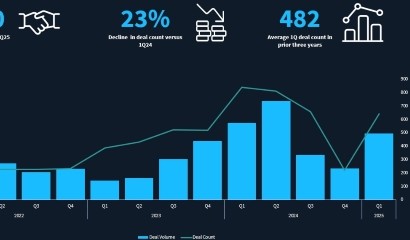Argentina ‘shock’ measures applauded by investors; doubts remain about implementation
Investors and bondholders have a broadly positive view of the economic measures Argentina (CCC-/Caa1/CC) announced on 12 December, aimed at reducing the fiscal deficit by more than 5.2 percentage points of GDP, according to four buyside sources.
Nonetheless, there are doubts regarding the possibility of implementing the package, as many of the measures require congressional approval, while others may face social resistance, the first and second buyside sources said.
“These measures go in the right direction and are even better than expected. It is a shock plan,” the first buyside source, an Argentina-based portfolio manager, said. “A fiscal consolidation plan was unavoidable for Argentina. Maybe they cannot do all they want, but if they can reduce fiscal deficit by four percentage points it will be excellent anyway.”
The package announced by Economy Minister Luis Caputo is aimed at achieving “zero deficit” by the end of 2024, by cutting public spending by 2.9 ppts of GDP and increasing revenues by 2.2 percentage points of GDP through tax increases.
The new government announced “a grand experiment: adjusting its fiscal deficit by 5% of GDP to get to fiscal balance in just one year,” MIT professor of Economics Ivan Werning wrote on his X account. “This is really something to watch, like a World Cup Final,” he said.
The reduction in public expenditure will be done through a cut in subsidies to energy and transport (representing 0.7% of GDP), a decline in discretionary transfers to provinces (by 0.5% of GDP), a reduction in public works equivalent to 0.7% of GDP and a reduction in the government’s operating costs by 0.5% of GDP, among other items. Moreover, the government plans to suspend the pension inflation adjustment formula with discretionary increases by decree, which will result in a reduction of retirement and pension spending by 0.4% of GDP in 2024, as reported.
At the same time, the increase in tax income is expected to be achieved via the reversion of the income tax cut approved by congress earlier this year, which would imply a bump in tax revenues of 0.4% of GDP in 2024. Additionally, a 15% withholding duty will be established for all exporters, including non-agricultural sectors, increasing tax collection by 0.5% next year, while an increase in the PAIS tax rate for imported goods from 7.5% to 17.5% will add 0.8 percentage points of GDP in additional revenues next year, as reported.
“The proposed tax increases have to be approved in congress, as well as the suspension of the pension adjustment formula,” the second buyside source said. “Additionally, there’s the risk of some federal court judge halting any of these initiatives.”
Additionally, “the still hefty correction of lower real expenditure still needs to be assessed through the prism of social tolerance,” JPMorgan wrote in a report.
Caputo’s measures also include a decision to devalue the official FX rate by 54%, from ARS 366.5 per USD 1 to ARS 800 per USD 1, which was made effective today, as reported.
“The government is making the exchange rate more realistic,” Leonardo Chialva, a partner at Delphos Investment. told Debtwire. “The strong fiscal adjustment is just the beginning of all that must be done. But it’s a first step, and in the right direction.”
Argentina’s sovereign bond prices were up by 2.5%-4.3% today, according to a report from Argentine portfolio manager PPI. The country’s 2030 bonds traded at 40.45 today, while the 2035 notes last traded at 34.4, according to MarketAxess.
“These measures are positive because they aren’t half measures,” the fourth buyside source said. “They went all the way with the exchange rate, and they will probably do a managed floating rate,” in the near future. “They still haven’t announced anything with respect to the unification of the FX rate.”
“The risk of holding to the current FX restriction apparatus is that inflation quickly erases the nominal correction of the exchange rate,” JPMorgan wrote. “A new FX correction may be required to finally migrate into a unified exchange rate system, without capital and financial account restrictions other than macro-prudential.”











